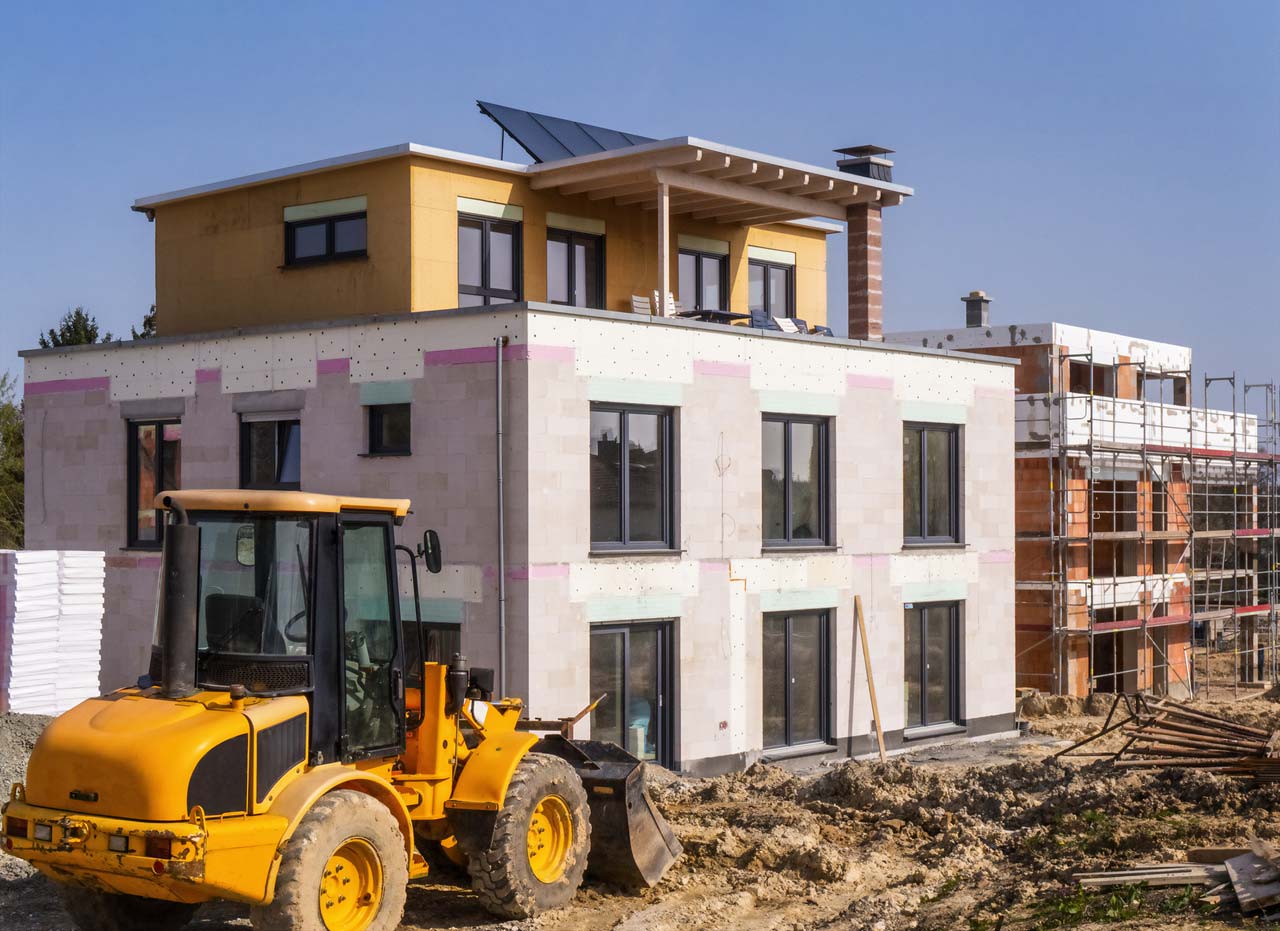Collectors for solar systems – models, differences and the advantages & disadvantages
Solar collectors are the most important element of a solar system. Solar energy is captured and provided in the collectors to heat and release water for household use. Solar collectors are divided into two different models, both of which have advantages and disadvantages. The collectors also have different efficiency ratings and price categories, which differentiates them.
Solar collectors – the heart of the solar system
Without the collector, a solar system could not convert the solar energy into usable heat. The collector is therefore the heart of the solar system, which makes it possible to use the renewable energy in the home. Want to learn more about solar systems and the cost? Calculate the cost of your individual solar system with our solar system calculator! But which different models are there among the collectors and which one is the right one for my solar system?
Flat plate collector – the proven model
Flat-plate collectors were the first collectors to be used to harness solar energy. They are therefore still the most widespread model today and form a market share of a proud 70%. Their reputation is probably not entirely unconnected to this, as flat-plate collectors are considered to be very inexpensive, reliable and, above all, they offer a technology that has certainly proven itself over the years.
Structure of a flat plate collector – absorber, housing and the heat transfer fluid
A flat plate collector has two simple components. A housing and a blackened metal sheet that is located inside the housing. This metal sheet is also called an absorber, because the dark coating ensures good absorption of the incident solar radiation. The absorber also efficiently converts the incident solar energy into heat. In order for the heat to be transported, pipes run along the back of the absorber in which heat transfer fluid flows. This flows cold into the collector and leaves it hot. To protect the collector from external conditions, such as the weather, it is covered by a safety glass. This glass is very stable and at the same time highly transparent, so that as little radiation as possible bounces off it. This ensures that as much solar energy as possible reaches the absorber to be converted into heat. To ensure that the housing also contributes effectively to heat generation, it is particularly well insulated and therefore hardly loses any heat energy. The efficiency of the solar system is thus increased.
Differences in flat plate collectors – structure, shape & piping
Even if the flat plate collectors are combined into one model, there are still differences. Different flat plate collectors differ in the housing material, the different connection of the tubes and other features. Depending on the application, the different designs have their advantages and disadvantages.
- Shape of the absorber – The absorber can be made of different materials. There are absorbers made of steel, stainless steel or aluminium sheets. These can be connected in different ways, for example by spot welding or roll bonding. There are also differences in the copper pipes in which the liquid is conducted. They can be pressed in but also soldered.
- Coating of the absorber – The absorber layer has developed further and further in recent years. After all, the layer should be able to absorb as much of the solar energy as possible. Today’s technology provides for highly selective layers that have a particularly high degree of absorption. It also has a low emissivity of the long-wave thermal radiation.
- Laying the heat transfer tubes – The tubes can either be laid in a tube register, where they are parallel side by side and connected at the top and bottom, or they can be laid in a meandering pattern, which means snake-like in one piece.
- Housing material – The material of the housing can also vary depending on the model. The most common are aluminum, stainless steel but also plastic. Even wood would be an option as a housing for a solar collector.
Tube collector – the better thermal insulation ensures higher efficiency
The tube collector came after the flat plate collector and is an alternative to it. Despite different technology and less market share, this model also has its advantages.
Structure of a tube collector – vacuum, heat pipe and the glass tubes
The tube collector model differs from the flat plate collector in one particular point, namely in the insulation. While with the flat plate collector only the housing is insulated, with the tube collector every single absorber is insulated and this in a special way. Here, the absorber is encased in an evacuated glass tube, as vacuum has particularly good thermal insulation properties and allows neither losses through convection nor through heat conduction. Several of the tubes together are connected to a collector and then form a tube collector. Since this way of insulating is much more effective than that of a flat plate collector, the efficiency is much higher here, since less energy is lost. Due to the technology, this model is also called a vacuum tube collector.
Different design of tube collectors – heat pipe, CPC & direct flow
The tube collector models are additionally differentiated into different designs. On the one hand, the direct and the non-direct flow tube collectors – they are also called heat pipes. Another form are the CPC – vacuum tube collectors.
- Direct flow tube collectors – In this design, the heat transfer fluid flows directly through copper tubes into the glass tubes. Here it is heated and when it exits it is combined with the other tubes in the collector. It is then transported to the heat exchanger via the solar circuit. In the event of a defective vacuum, it is not difficult to replace one of the tubes independently of the others.
- Heat-Pipe (non-direct flow) – The heat-pipe uses a thermodynamic process for heat transfer in which a heat pipe ( head-pipe ) passes through the glass tube containing a readily vaporizing liquid, such as water or alcohol. When heated, this liquid evaporates and rises to the head of the glass tube where heat is transferred by condensation of the vapor to the heat transfer fluid passing outside the head. The rest of the liquid flows back to the bottom of the tubes and repeats the process once room temperature is reached. This is sufficient to cause the liquid to condense, as there is a negative pressure in the tubes – the vacuum.
- CPC vacuum tube collector – This design is a variation of the direct flow tube collectors. Here too, the copper tubes run through the glass tubes, but the special feature is that two glass tubes are arranged concentrically and lie in front of a parabolic mirror. The absorbent coating is applied to the inside of the glass tubes. The parabolic mirror helps to make the collector even more efficient, especially at low irradiation. The yields are therefore comparatively higher and the collector works more effectively.
The heat transfer fluid – what needs to be considered
The heat transfer fluid stores the heat and transports it through the solar circuit to the solar storage tank. The heat is then released from the fluid and used to heat tap or heating water. The cooled fluid then flows back and starts its journey all over again. The question that arises, however, is what is suitable as a heat transfer fluid. Here the answer is relatively simple, because normal water is already perfectly suitable for this task. However, as there is a risk of frost, especially in cold months, which could cause irreparable damage to the collector or absorber pipe, the water must be mixed with an antifreeze. But the heat transfer fluid must also be able to withstand high temperatures. Especially in CPC vacuum tube collectors, temperatures of up to 350 °C can occur. To ensure that the viscosity does not suffer due to the antifreeze and such high temperatures, thus reducing the heat capacity, a mixing ratio of 40% propylene glycol and 60% water is usually aimed for. This mixture not only withstands cold temperatures as low as -25°C, but is also suitable for high temperatures. When purchasing the heat transfer fluid, pay particular attention to high temperature stability, good corrosion protection, the lowest possible viscosity, high environmental compatibility and a high heat capacity.




